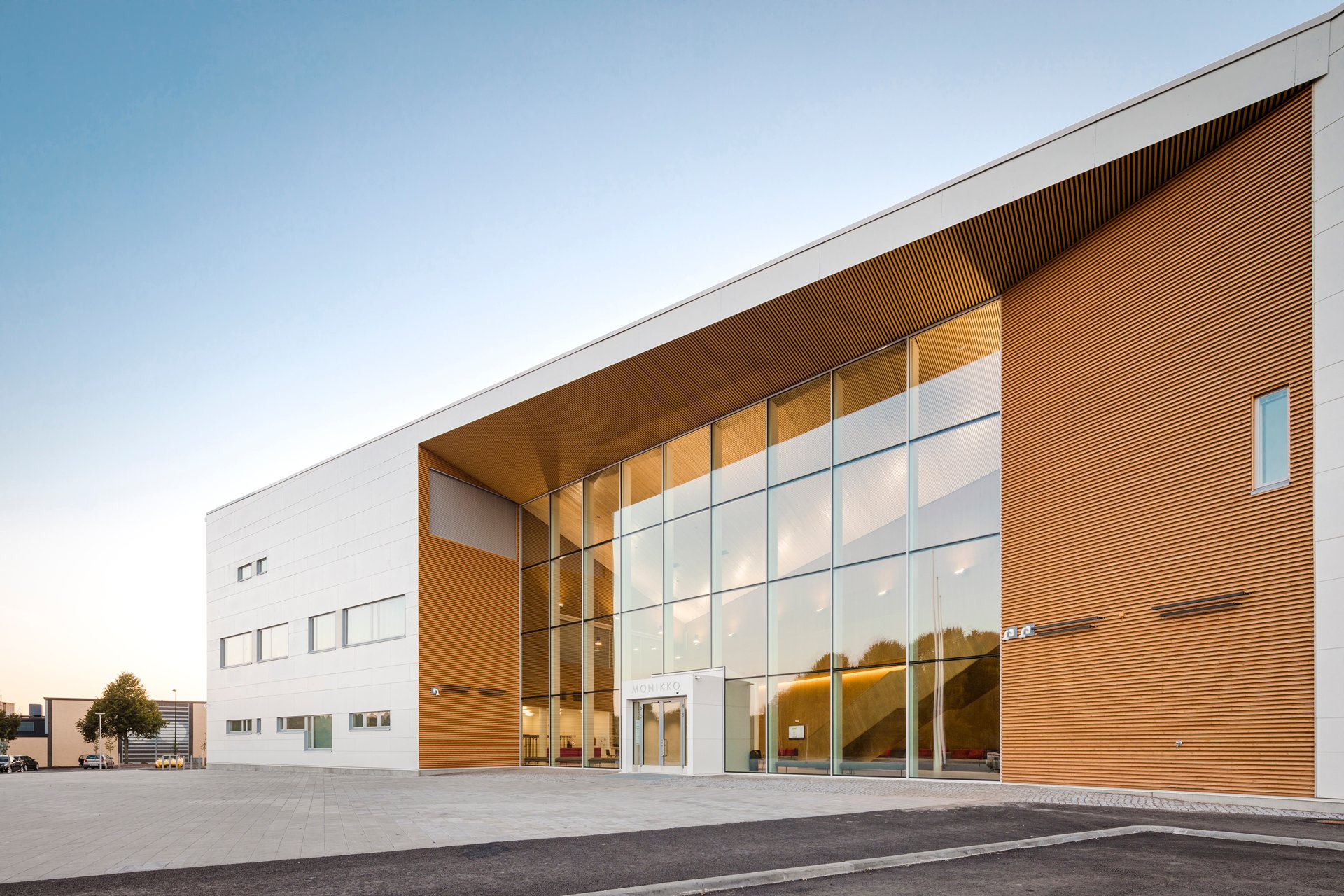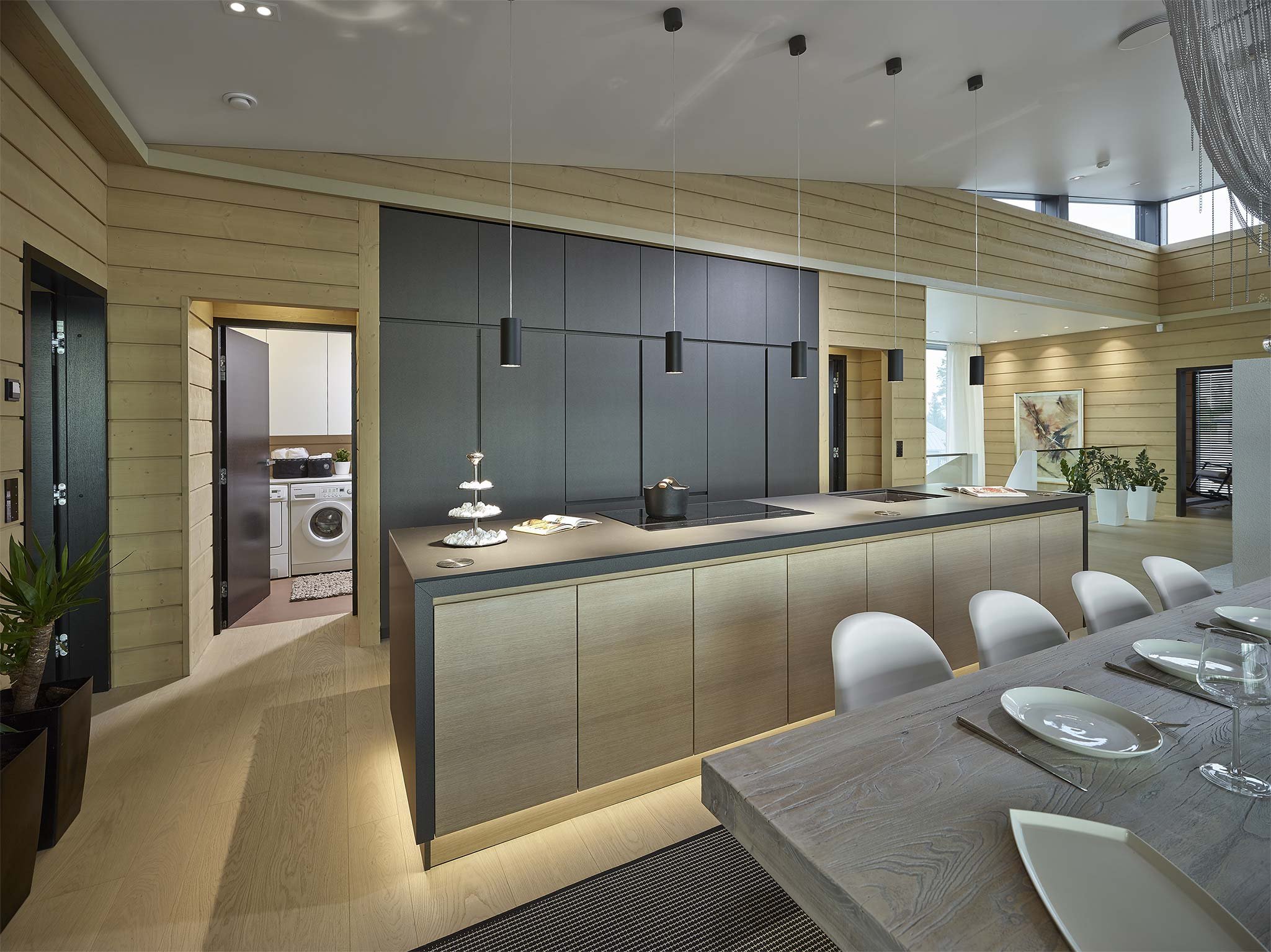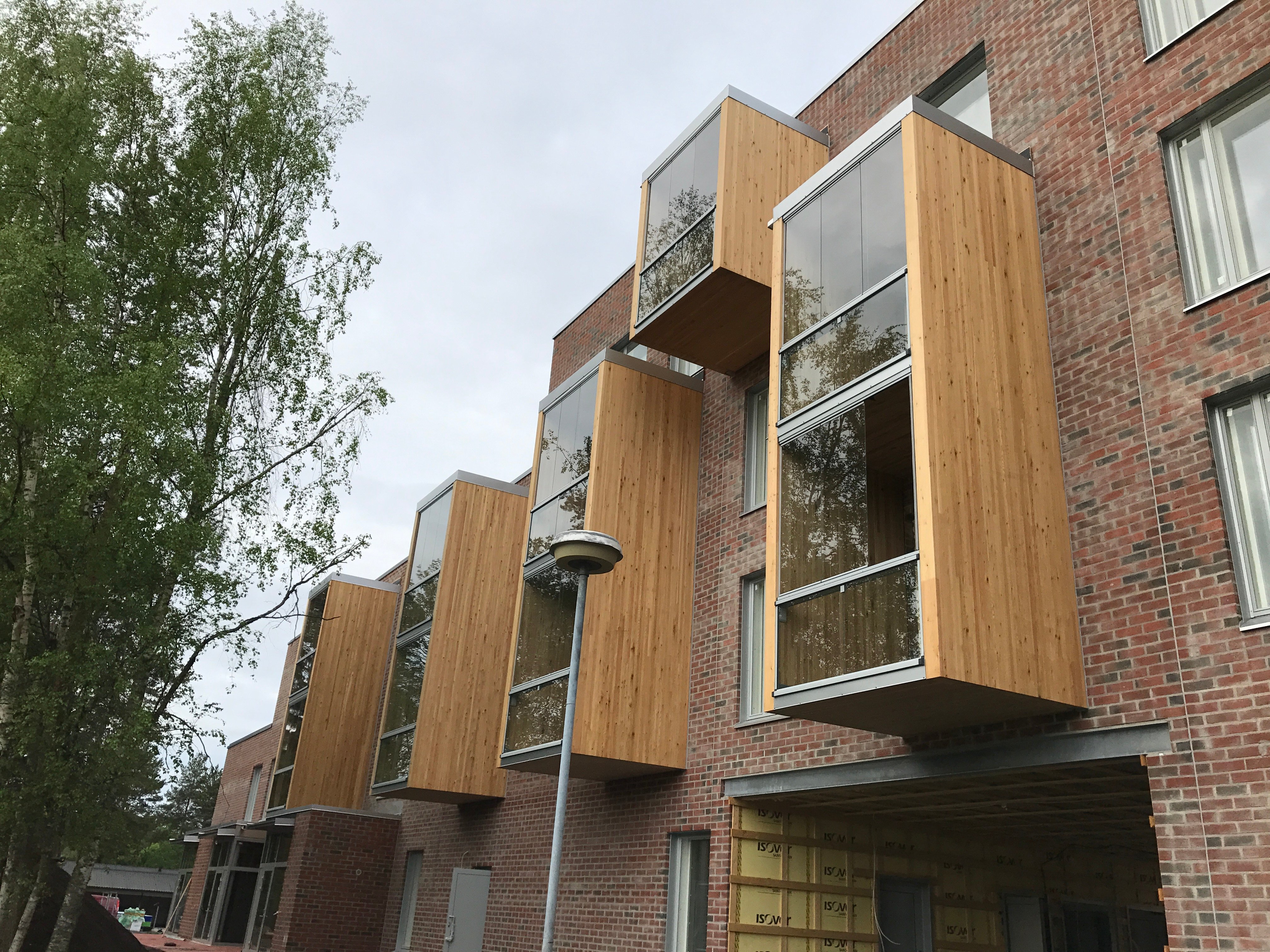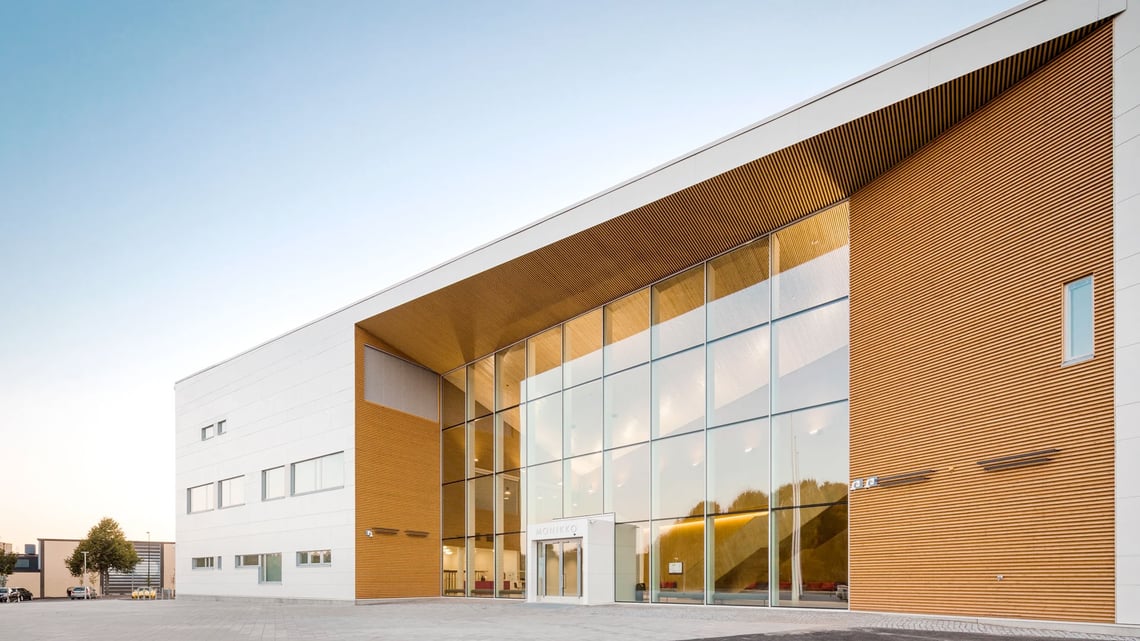The European design standard Eurocode 5 regulates the design of products used in construction and specifies their structural fire requirements. Products that meet the requirements of Euroclass B-s1, d0 can also be used in demanding large-scale timber construction projects.
Fire class B-s1, d0 means that a product contributes to a fire to a very limited extent, its smoke production is very limited and it does not produce flaming droplets. The fire class requirements applying to construction products depend on the use and size of the building and where in the building the products are to be used.
THE USE OF A BUILDING MATTERS
The designers must take care of the design of a building so that the building meets the essential requirements set for fire safety in accordance with its intended use. In Finland there are four fire classes for buildings: P0, P1, P2 and P3. They are based on the fire resistance of a building’s frame and fire-separating building elements. In the U.K. fire safety regulations are under change.
EXTERIOR CLADDING
The exterior cladding on fire class P1 buildings that are under 56 metres in height must meet the requirements of Euroclass B-s1, d0. This class includes apartment buildings, nursing homes, schools and other public buildings. Wooden cladding panels can be industrially fire protected and given a CE marking to indicate their suitability for this fire class. Balcony latticework and other similar structures are typically treated with a fire retardant on site in accordance with the manufacturer’s instructions, in which case a site-specific approval for the fire protection is required.

Nurmijärvi municipal building Monikko, Finland
When selecting a fire retardant for exterior cladding, you should pay attention to the product’s eco-friendliness, the impact of weather on the durability of fire protection and whether the wooden building product is actually ready to be installed or whether it will require further treatments during the installation process or soon thereafter. When wood products are industrially treated with Nordtreat fire retardants, they will not require further treatments. Surfaces that are directly exposed to the effects of weather usually need a maintenance treatment after 5 to 15 years, depending on the building.
INTERIOR SURFACES
Many interior surfaces also need to meet the requirements of Euroclass B-s1, d0. Such buildings include care facilities of fire class P1 and P2, accommodation and office premises of fire class P2, over 300 m2 shops, exhibition halls and libraries as well as many facilities where fuels or other flammable substances are stored or handled. Wooden interior panels can also be industrially fire protected and given a CE marking to indicate their suitability for this fire class.

Villa Riihi, Seinäjoki, Finland
Other wooden interior products to be fire protected could include floorboards, staircase structures and various acoustic panels that contain wood.
Interior surfaces should be treated with fire retardants that have low emissions. In other words, they meet the requirements of emission class M1 like NT DECO does.
CLT ELEMENTS AND OTHER ENGINEERED WOOD PRODUCTS
The surfaces of CLT (cross-laminated timber) boards and elements can also be treated in accordance with the requirements of fire class B-s1, d0. At the moment, CE certification is not available for industrial treatments because there is no harmonised product standard yet in the EU region. Inside a building, wall surfaces, ceilings, staircases and lift shafts are often left visible. On the outside, typical CLT structures include suspended balconies and roof structures.

Sevas Risuviita, Seinäjoki, Finland
Laminated veneer lumber (LVL), glulam and various visible beams and roof truss structures can also be protected in compliance with the requirements of fire class B-s1, d0.
READ MORE ABOUT FIRE PROTECTED WOOD PRODUCTS →

